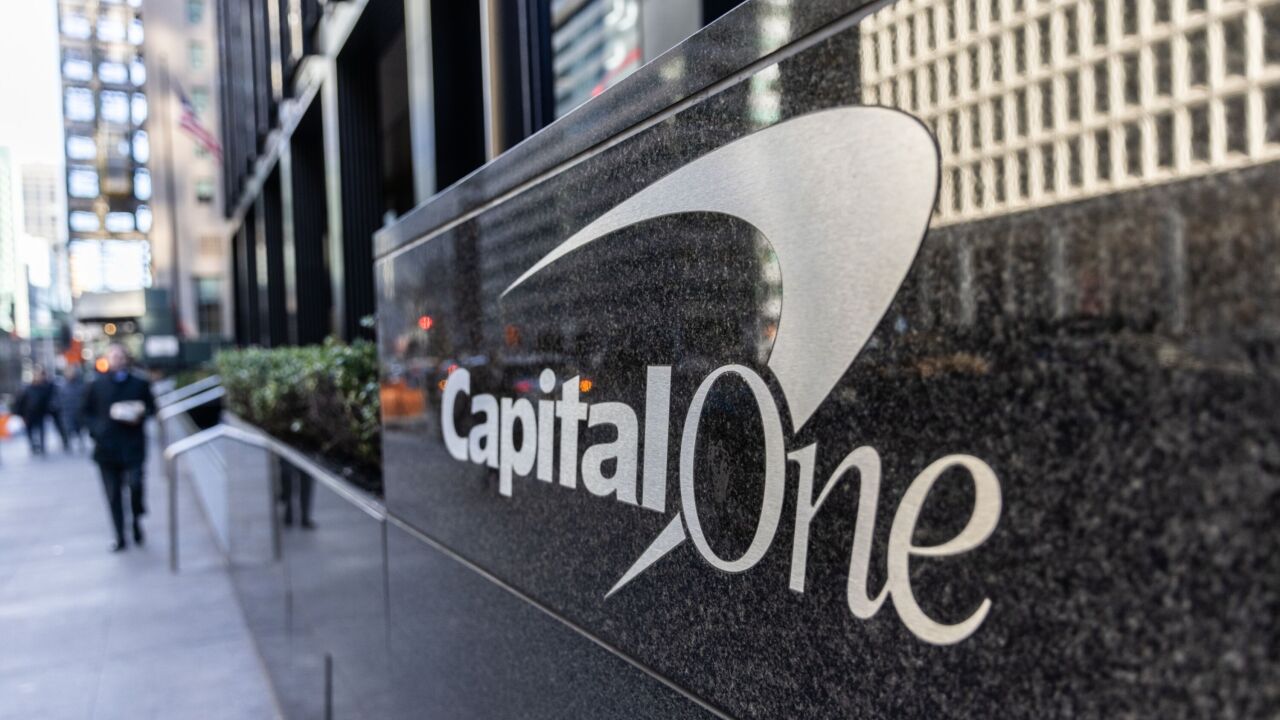Bank of America is reporting a “surge” in use of its online and mobile banking banking offerings.
Nearly 40 million of its 66 million customers are now using digital channels, the bank reported Monday. About 17 million are now using its virtual assistant, Erica, up 67% from the end of 2019. Meanwhile, Zelle person-to-person payments volume grew 80% last year and about 77% of the bank's wealth management clients are now digitally active.
Other big banks, including JPMorgan Chase and Wells Fargo, are reporting similar gains in digital adoption. The three banks all reported at least 6% growth year over year in the number of "active" mobile users, defined as those who have used the app in the past 90 days.
David Tyrie was promoted in January to Bank of America’s head of digital — enterprise; previously, he was head of advanced solutions and digital banking. He has set himself a goal of driving digital adoption up to 100% across the bank. Artificial intelligence tools like Erica are a big part of his plan. At the same time, Tyrie, like leaders of the other large banks, is wary of competition from fintechs and Big Tech and sees the need to continuously up BofA's digital game.

In his expanded role, which puts him in charge of digital banking for corporate clients as well as consumers, small businesses and wealthy clients, Tyrie is focused on three things: digitizing the existing business to become more effective and efficient; innovating in ways that can advance a business model; and forging partnerships with companies that offer things like rewards programs.
“Now we have one center of excellence at Bank of America that is focused on that across institutions and individuals,” he said. Tyrie will try to make sure that all the new initiatives that stem from that center have a business impact, for instance by helping to increase loans, deposits or investments, or by reducing expenses.
Working at digital engagement
Tyrie is proud of Bank of America’s digital engagement numbers. In addition to the 39 million digitally active customers, about 70% of Bank of America small-business clients are digitally active, meaning, they’ve used online or mobile banking in the past 90 days. Clients deposited 160 million checks using the mobile banking app in 2020. Last year, 84% of deposits were made through the company’s automated channels — mobile, online and at ATMs — up from 78% the prior year. Digital sales accounted for 42% of total consumer sales last year, up from 30% in 2019. About 68% of consumer mortgage applications and 74% of direct auto applications were made digitally, compared to 36% and 60% respectively in 2019.
And about 60% of new credit cards are now opened digitally at Bank of America, Tyrie said.
“That's not the way it was a few years ago,” he said. “We had to put a focus on that and create new digital onboarding experiences. We had people who are really good at understanding how to design it so it's simple, easy, convenient and safe and doesn't cause people to get halfway through and then call us, because that'll actually put cost into the system.”
Tyrie noted that the digitally active number is hard to keep growing because there are customers who have a savings account or a backup credit card who just don’t need to use the app much. Many of the customers helping to increase the stat are 55 and older.
“One of the things that we found during the pandemic was about quarter of the people who joined the active user base and were logging in for the first time were baby boomers,” Tyrie said. They’re not going to turn back to their old habits when quarantine restrictions lift, he said.
To promote adoption of digital tools, about a year ago, Tyrie’s team created a an internal metric called the digital engagement index. It’s an AI-based system that monitors customers’ activity and suggests next steps that should be recommended to them. For instance, if a customer is using mobile check deposit on a regular basis, the system might suggest that that person try using Zelle for person-to-person payments. The recommendations are communicated to customers through Erica.
Customers’ most common use for Erica today is to automate banking tasks, such as by telling Erica to send a friend $20 through Zelle.
The fintech threat
JPMorgan Chase Chairman CEO Jamie Dimon said in a recent analyst call that bankers should be “scared" of fintech competition, naming companies like PayPal, Square and Stripe.
Tyrie looks at this competition slightly differently.
“I think we have a healthy paranoia about everybody,” he said. That includes other large banks, Big Tech firms and payment companies.
“We’ve got to be thoughtful about the disruption in the payments side,” he said.
Fintechs are unique “because they find some weak link in the experience and they are able to very quickly come out with an offering that addresses that so-called weak link,” Tyrie said. “But the question becomes, can you turn that into a business model? You've got to watch for the ones that potentially could offer multiple products.”
Bank of America aims to continue innovating by expanding the capabilities of Erica and the Life Plan feature that lets clients set and track near- and long-term goals based on their life priorities and better understand and act on steps toward achieving them.
“The digital experience of the future is not about just getting information,” Tyrie said. “It becomes the built-in advice and guidance and being a trusted ally. Life Plan is the basis for that piece of it."





